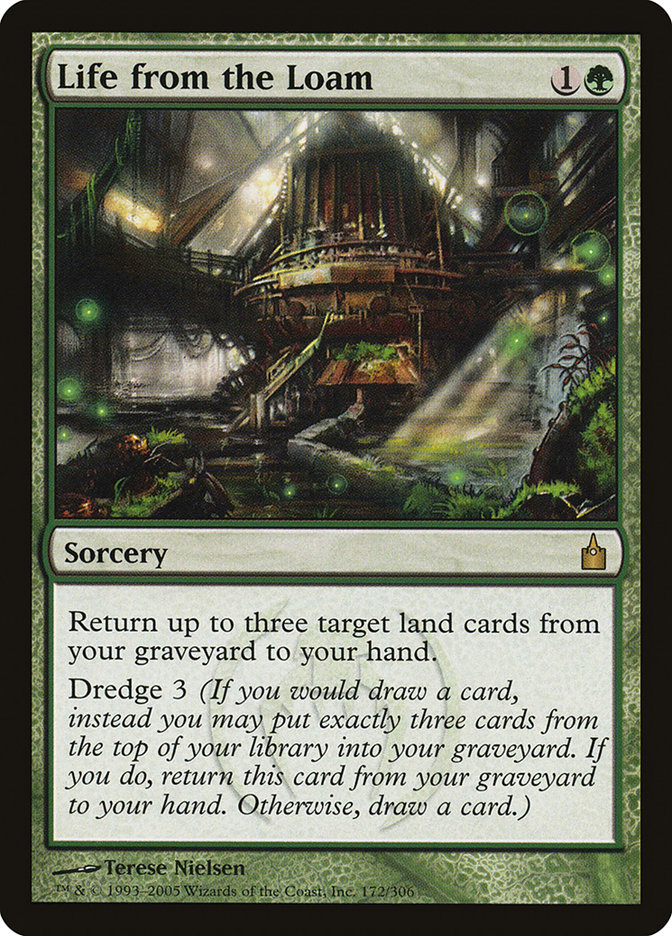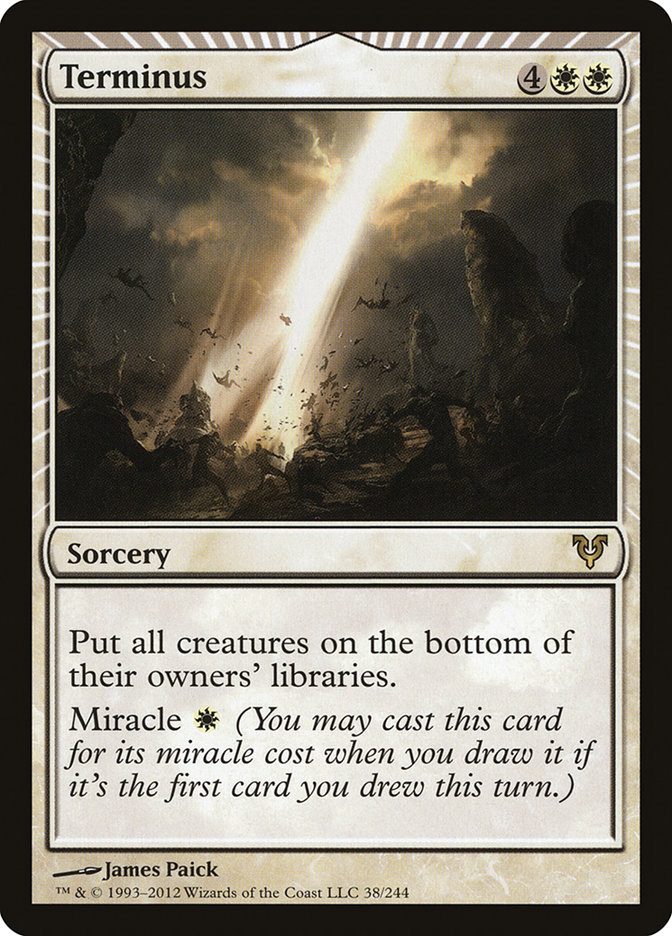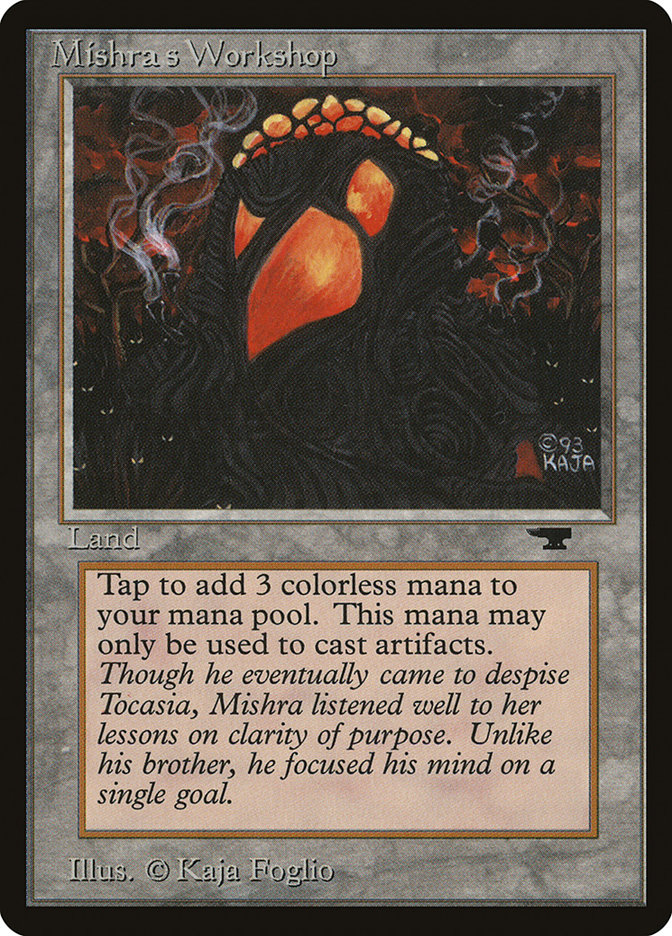Testing for the four-format Worlds has begun for me, and unfortunately that leaves me locked down across the board. I’m pretty sure both Magic Origins Draft and Modern Masters 2015 are long dead at this point, but being unable to talk about Standard and Modern is a significant disability for me when it comes to content production. Fortunately, there are three big events in “oddball” formats coming up over the next two weekends: Team Limited at Grand Prix Detroit and Legacy and Vintage at Eternal Champs.
Standard (Grand Prix London):
OK, maybe I lied a bit. Standard really is an oddball format if Blue-Red Turbo Mill can win the Grand Prix directly following a Mono-Red Aggro deck winning the Pro Tour, especially when its only kill condition is Sphinx’s Tutelage on the weekend where Den Protector plus Dromoka’s Command was the cool-kid thing to do to beat red decks and Thopter tokens.
Despite Michael Majors wrecking the event with it, I think Sphinx’s Tutelage is a bit of a flash in the pan. This was in part due to people cutting sideboard slots that were historically anti-control slots to fit in red and Thopters hate, and in small part due to Unravel the Aether being the Disenchant of choice. Shuffle back in? Sure, I’ll just draw it again later! People will start moving back to Duress and Negate to combat this, and as a side effect control will also suffer.
Green-Red Devotion was a definite loser. I went 6-3 with the deck, and it felt rough. It isn’t a case where the matchups are terrible, but nothing is really great. Abzan and Green-White have a ton of Tragic Arrogance now compared to Pro Tour lists, red is a tight match, and Thopters has a lot of draws you struggle to beat. It’s in the classic spot of being 40% against the field. Gerry Thompson had a slightly better weekend with a 12-3 finish losing the last round while playing for Top Eight, but that’s likely more the pilot than anything else. Even the brainless deck is still hard to play.
While Brian Kibler Green-White Megamorph deck had the huge numbers boost, the real winner of this weekend moving forward is Corey Burkhart’s Abzan Aggro deck. The entire weekend he was actively excited to play against Thopters and Kibler’s Megamorph deck, which you may have noticed were the two most-represented decks on Day Two.
If I were attending Grand Prix London, I would default to an Abzan deck of some sort as you have a real set of targets to hit and can build to them if you want to be midrange. If I was hell-bent on playing red, I would play Atarka Red as people’s answers are more focused on beating the creature-light Exquisite Firecraft builds and they are softer to the “go-wide” Hordeling Outburst approach. I would not play control or Devotion, and despite the Thopters decks making Day Two in large numbers, a lot of those copies two squeaked in at 7-2 and min-cashed.
Team Sealed (Grand Prix Detroit):
There’s so much focus on the team play aspect of Team Sealed Grand Prix. Seating order, asking advice, deck positioning, and so on. In reality, the biggest place advantages are gained in event are in that first hour: the deck build. The all-star teams get ahead in any given round because their skill differences are magnified by playing three matches, but honestly most of their edge is gained by building better decks from the start. There’s a reason the process takes a full hour and there’s a reason even the best in the world are still scrambling at the end. It’s hard, and there’s a ton of dials to turn and places to slot cards.
There’s also a lot of bad ideas about it. Some people want to build two great decks and one bad deck assuming that it puts them ahead, or put the aggro deck in the middle so that person finishes faster and can help the other two matches out. Others want to put the control deck in the middle so the best player has it. One way or another, metagamers come up with some convoluted plan based on ideas about what it takes to win in the team format.
Here’s the real secrets:
Build good decks that play good Magic, that’s it.
Look for packages that work together and consider what the rest of the deck looks like if you build around that package. You have two copies of Sphinx’s Tutelage? How does this leverage your other cards? Do your “unplayable” Yoked Oxen start looking good, making your white deeper than you first thought? This is also where some of the weird things that can happen in twelve packs shows up. Six copies of Faerie Miscreants? Sure, we can make that deck work.
Splitting and pairing colors is not necessarily based on a color’s depth, it’s based more on splitting card types. Does your black have answers but lack threats and your green have threats but need answers? Maybe the best line is to put your Suppression Bonds with the Leaf Gilders and Stalwart Avens with the Unholy Hungers even if your white doesn’t look like it can support two decks. If you are splitting a color into a deck just to fill average playables, take another look and see if you can’t push things around in a different way.
Once you have one configuration mostly built, try starting from different principles and quickly seeing how that cascades out. You may think your decks look good, good, and fine, but maybe swapping blue for black in one deck lets you shift more things around and end up with three really nice ones.
Look at each color separately and see what holes there are to fill in it. If white has three Charging Griffin and two Ampyrn Tactician, you probably don’t want your heavy white deck paired with blue as you will be overloaded on fours making your Separatist Voidmages bad. If green and black are both missing a way to handle an opposing monster, consider that you should keep them split.
Pay attention to where the chaff cards go for sideboarding. Don’t just throw it into a pile. Don’t just shove it off by color. You may see your grindy black-white deck needs to splash to win a control mirror and regret putting those Dreadwaters in the blue tempo deck that can just straight-up ignore blockers.
Team Sealed is all about trying to sort through an innumerable amount of options in way too little time. Manage your clock time well. Don’t get sucked down rabbit holes, set deadlines for when you have to look at the next option, start refining, and start registering.
And don’t panic. As per above, even the best players in the room are in the same boat as you are. You should be more worried if you aren’t strained for time as that is more likely to mean your pool is unplayable and had no options than anything else.
Legacy (Legacy Championships; Season Three Invitational):
Unlike the last couple of years, this year’s Legacy Championship is not close to a new release with some game-changer that warps the format. There’s no True-Name Nemesis or Treasure Cruise popping out of nowhere this time… this event is going to be driven by the last few event results: Grand Prix Lille, last weekend’s Legacy Open in DC, and the many Premier Invitational Qualifiers at the other Opens leading up to that event.
Here are my highlights from those results:
Life from the Loam is going to be a big player… once you get deep into the event. Daryl Ayers has put up back-to-back Top Eights at the Richmond Premier IQ and the DC Open with the deck, and the deck was the breakout finisher at Grand Prix Lille with two copies of Aggro Loam and a Lands deck coming out of left field to Top Eight. But that doesn’t mean it’s now the hot deck on the block. The Tabernacle at Pendrell Vale alone constrains this deck’s metagame density, and that’s not the only hard-to-obtain card. The deck is also technically hard for new players to approach. This is not the round-one or -two nemesis you will face, but it will be a deck that is winning a lot and you will likely find yourself around if you plan on taking home the painting. Don’t cripple your core matchups to beat it, but don’t ignore that it exists.
Miracles is still king. The innovation of Monastery Mentor at Grand Prix Kyoto in April gives the deck a whole new angle of attack, and despite a string of mediocre results the last couple of weeks it still holds 100% of Grand Prix finals slots this year.
Delver will show up because it is Delver, but I expect more midrange blue decks as a reaction to the whole Miracles thing. These decks are better able to fight an in-play Counterbalance, have threats that are more resilient to Swords to Plowshares and Terminus, and are generally a bit better against sideboard Rest in Peace as they don’t have copies of Tarmogoyf and Nimble Mongoose that get bricked by it. And yes, I am saying this despite there being two Delver decks in the top four last weekend.
The combo deck of choice is Omni-Tell, which is inherently exploitable. They have to resolve a Show and Tell to win, and while they have a lot of tools to prevent the usual Oblivion Ring response that creates a choke point, if you target their Shows and Dig through Times then their deck really struggles to do anything. As for other combo decks, it’s a rough time. Bryant Cook can Top Eight with Storm, but this was definitely a “Don’t try this at home” moment.
I would not play Death and Taxes into a format where Omni-Tell and Punishing Fire are popular. I would not play a generic Jund-y midrange deck into Lands and Omni-Tell being two of the four most relevant decks. I do like the idea of playing Reanimator, but the fact that it Top Eighted last weekend and that the hate for it overlaps with the hate for Loam is worrying. Realistically I would be playing Storm if I went, but that’s more of me wanting to play Dark Ritual than me making good decisions.
Vintage:
Over the last year, Stax has gone from simply one of the better Tier One decks to really being the scourge of the format. Something has happened that has made everything fall right into the hands of the people playing Sphere of Resistance and Chalice of the Void
Oh, that.
So last year Treasure Cruise was a playable four-of in the format, leading to a large amount of Delver decks showing up at Champs. Delver is inherently good deck against Stax as it has a lot of cheap interaction that matters, cheap threats, and it is low on Moxen and therefore good against Chalice of the Void.
A combination of the restriction of Treasure Cruise and additional time to refine decks has led to Dig Through Time now being a crucial part of the format. Basically every non-Shops, non-Dredge deck is playing the card. This pushes those decks to be more cantrip-heavy, which lets them cheat on lands. They generally start looking more and more like the combo decks that they can now match in card velocity and selection.
You know what beats combo really well? This guy.
Now, the real-life metagame won’t match the Magic Online metagame’s 30% Shops stat simply because Mishra’s Workshop is a constraint on building a physical deck at $4000 a set, but you will have to play the deck multiple times to win the event.
If I was going to this event instead of sadly skipping it to test for Worlds, there’s a good chance I would just play Dredge. Despite it winning the last large Vintage event, it is still in a good spot. People are still having to over-board against Stax, and you are inherently great against the lock deck because you don’t really cast spells.
If I was casting blue spells, I would be playing something lean and efficient. Magnus Lantto won the MOCS finals with Grixis Delver in a field of Shops for a reason. I would be playing cheap threats and red cards. It doesn’t hurt that Delver is also just better against combo than the bigger blue decks. You are a bit worse against Dredge, but you need slightly less sideboard cards against Stax so you can make up for it. And it’s not like a Mana Drain deck is good against Dredge to begin with, so it’s just going from bad to slightly more bad. The only non-aggro control deck I would look at is Oath. The deck won last year’s Vintage Champs, and if Harry Corvese can Top Eight last year with absolutely no experience with the deck then there’s probably something to it.
There aren’t a lot of time where I get to escape the constant loop of Limited, Standard, and Modern, but honestly it’s nice for a change. Even if I only get to think about them and not play, it’s good to know Magic is such a deep game. The constant chain of sets and new card assessments is one of the best parts of the game, but the sheer depth of options for how to play is just as great.







